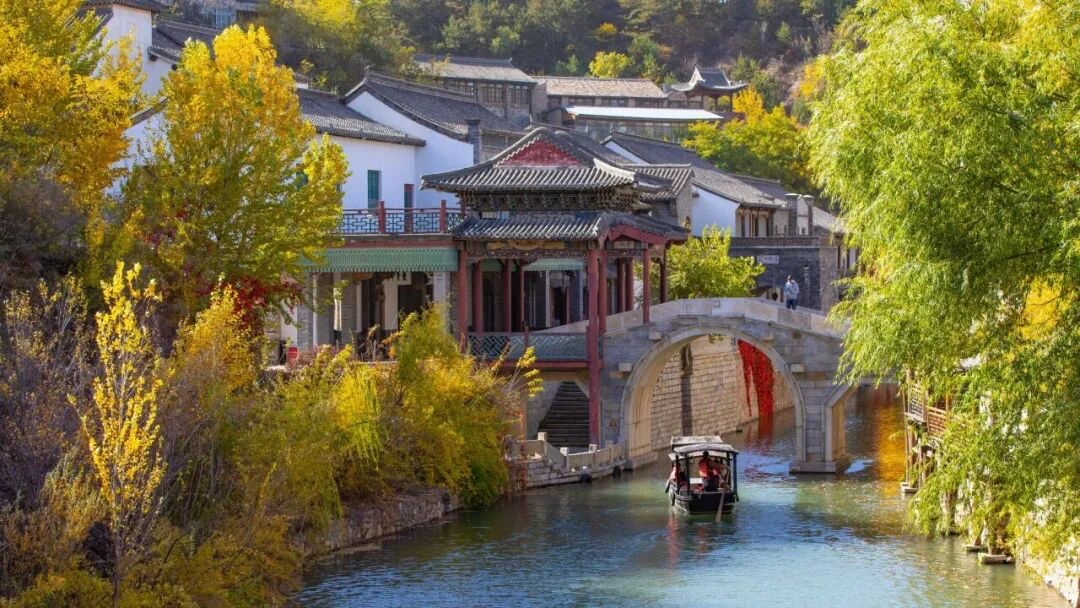Situated to the north ofBeijing Zooin Haidian District, it is an ideal place to appreciate the splendid history of Buddhism and architecture in China as well as to enjoy the pleasant scene and special tranquility of it. It is a respite from crowded tourist attractions in the city.
It is located in the east of Baishi Qiao, north bank of the Changhe River, close to the north gate of Beijing Zoo, the Capital Indoor Stadium, Dazhong Temple, Zizhuyuan Park, Exhibition Center. It has the oldest and most beautiful Vajrasana Pagoda (diamond throne pagoda) among the total six in China. Art Museum of Stone Carvings is established within it. It has nice exhibition halls to the east, west and north of the Vajrasana Pagoda.

History
With its original name of 'Zhenjue Temple' (as the name engraved in the entrance), it was first constructed during the Yongle years (1403-1424) of the Ming Dynasty (1368-1644) and completed in 1473. At that time, an Indian monk came to China to present Emperor Chengzu, the third emperor of the Ming Dynasty, five golden statues of Buddha and a draft of an Indian diamond throne pagoda. Using this draft, it with the special architecture of five pagodas was built backing on the West Hill and facing the rippling Long River.
During the reign of Emperor Qianlong of the Qing Dynasty (1644-1911), it twice underwent extensive renovations and was renamed 'Da Zhengjue Temple'. In succeeding years until modern times, it has been totally renovated. In 1982, it opened to the public. Today, it is popularly referred to as the Five-Pagoda Temple.
Architectural Features
The main architecture in it is the grand construction of the Indian 'diamond throne pagoda' style, wherein five pagodas stand on a square foundation known as the throne. It does not copy the Indian mode, but has its own unique style fusing the Indian pattern with traditional Chinese architectural art and carving.
The whole construction, made of bricks and blue stones, has two parts:
One is the 25-foot-high square foundation with six stories. The first story with a height of 5.8 feet is the base of the whole construction. Each of the five stories above has a narrow eave and carvings of small Buddhist shrines and Buddhas, as well as bas-reliefs of Buddhist objects and Sanskrit letters on its four sides.
The other part is the five pagodas rising from their square bases on top of the throne foundation. One pagoda is in the center and the others in the four corners of the foundation respectively. The central one of 26 feet in height is a little higher than the others and has 13 stories, two more than the others in the corners. All of them are dainty in appearance and artistic in design. They are all engraved with delicate images of Buddha, bodhi trees, Sanskrit letters and Buddhist symbols as well as lions, elephants, horses and other animal figures. The images of Buddha on them represent Buddha in five directions according to the sutra. In addition, it is interesting that the south wall of the base story of the central pagoda is carved with a pair of footprints of Buddha, meaning that the spirit of Buddha spreads everywhere.
The complex, with the diamond throne pagoda as its essence, is an outstanding accomplishment of Buddhist art. The carvings in Sanskrit also provide priceless material for research of the ancient Indian language and Tibetan Buddhism. Today, bearing a history of over 500 years, it is not only a solemn religious relic, but also the location of the Art Museum of Stone Carvings which displays more than 2000 pieces of stone artworks for tourists.
Admission: 20
Open Time:09:00-16:30 (Except Monday)
Take bus no. 588, 689, Yuntong 106, 563, Yuntong 205, Te 4, Te 6, 717, 697, 320, 695, 608, 332, 653, Yuntong 105, 92, 614, 86, 319and get off at National Library Station, walk south till reach the north bank of Changhe River, walk east about 500 meters along the river and you will see it.
Subway Line 4: get off at National Library Station, get out of the station from southeast exit (Exit C), walk along Wutasi Lu along the Changhe River eastward for 500 meters.
Basic Information and Tourism Project Director
Address: No. 24, Five-pagoda Temple Village, Haidian District, Beijing
Liaison: Zhao Duan
Tel: 010-62174709;13581965305



